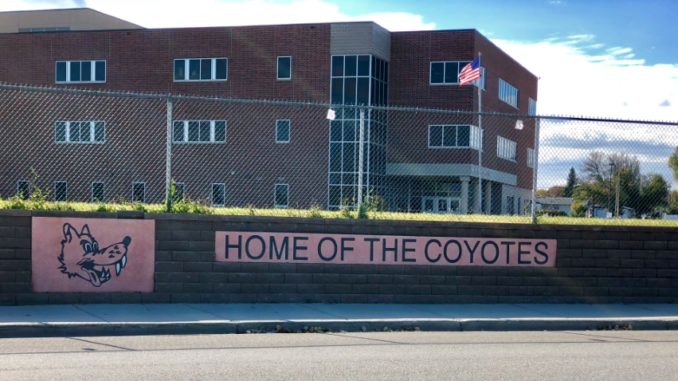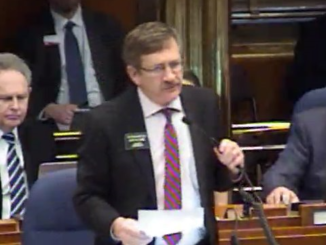
It’s somewhat of a trend in communities across North Dakota— failed school bond referendums. As KFYR-TV reported yesterday, “Several school districts across the state are looking to Plan B, or C, after bond referendums have failed.”
A $7.65 million proposal went down in flames earlier this week for the New Salem-Almont School District. Cavalier also failed to garner the necessary support for their $10.9 million bond vote. Dickinson’s $89 million referendum wasn’t even close to passing last month. And as noted by KFYR-TV, Williston has experienced defeat as well. The list could go on.
If you look at referendums like these, you’ll often find that the response to being told “No” by the voters is to immediately regroup and begin planning for another vote. For example, Dickinson’s failure wasn’t its first this year. Voters in that community defeated a $115 million bond back in May. That’s a mere four months between the two proposals.
From one perspective, bouncing back with renewed efforts to pass school bonds — after being rejected — is insulting. As I wrote two and a half years ago, these proposals are nothing short of legalized plunder. And it seems some folks across the state have had enough. Can you blame them?
Yet, should we expect supporters of these referendums to get the point? It’s doubtful. Heck, one former Democratic state lawmaker — who now runs his own political blog — recently called for the elimination of the 60% threshold to pass a school bond. He thinks it should be a simple majority. To him, the current requirement is an “arbitrary threshold [that] has created an unnecessary burden on many school districts dealing with enrollment growth.”
“Unnecessary burden”? Seriously? Tell that to those who pay for the increases to property taxes that result from passing these bond measures.
There’s no doubt that we have school districts in need. This is especially true of those in oil country. For example, Williston school district has over 900 new students this year alone. But is continually hiking property taxes the best solution? I don’t believe so. In fact, I think it’s the most immoral one.
So, what is the answer? The state needs to take over 100% of the funding for K-12 education.
Interestingly enough, Rep. Scott Louser (R – District 5) attempted something like this during the 2017 Legislative Session with House Bill 1388. But it was defeated on a vote of 29-62.
Earlier this year, during the 2019 Legislative Session, Rep. Larry Bellew (R – District 38) proposed House Bill 1525, which would have changed the way in which the building and maintenance of K-12 schools in the state are done. In a nutshell, it would have:
- Used Common School Trust funds to retire outstanding common school bonds.
- Funded all new and/or expanded common school real property facilities from the assets in the Common School Trust.
- Provided for facility maintenance and upkeep for all common school facilities using Common School Trust funds.
In other words, had HB 1525 passed, school bond referendums would have become a thing of the past. Unfortunately, the House defeated the proposal 17-75. I should also note here that the Common School Trust is currently sitting at around $4.5 billion— and growing.
A current memorandum for the interim Education Funding Formula Review Committee shows us that funding issues for schools are nothing new— they’re an ongoing problem.
Take, for example, Williston Public School District #1 and Williams County Public School District #8. District #1 is literally surrounded by District #8— as you can see by this map from the Department of Public Instruction. As mentioned earlier, the Bakken Oil Boom has brought significant growth to the area, but with that growth has come challenges.
While District #1 encompasses a much smaller area (15 square miles), according to the 2018-2019 numbers from DPI, they educated about 4,350 K-12 students compared to District #8’s total of about 650 K-8 students. Yet, District #1 has a taxable valuation of $120 million and District #8’s is $150 million. This means that District #8 enjoys lower property taxes than their neighbors in District #1.
So, what was a potential remedy passed by the 2019 Legislature? To allow one school district to dissolve and absorb into “other operating high school districts in the same county, or to a non high school district in the same county if there are no high school districts in the same county adjacent to the district being dissolved.” In a nutshell, the one district can dissolve without the approval of the district absorbing them.
Indeed, it seems the legislature is satisfied to tinker with the issue session after session. Indeed, they have no problem sitting on billions of taxpayer dollars in Bismarck, while simultaneously telling property owners to make up the difference locally. It’s asinine.
To be fair, the legislature isn’t solely to blame. The people really shouldn’t be let off the hook either. After all, have we forgotten about Measure 2 in 2012, which would have eliminated property taxes and forced the state to prioritize its spending— including funding K-12 at 100%? That was a blown opportunity, and it wasn’t the legislature who blew it. It was the people.
We need to stop the insanity of school bond referendums. It’s time to try a new approach where the state fulfills its constitutional obligation “to provide for a uniform system of free public schools throughout the state.”
PLEASE LIKE & SHARE!
Sources:
- https://www.kfyrtv.com/content/news/Bond-referendums-failing-across-the-state-what-are-next-steps-for-schools-562102091.html
- https://www.kfyrtv.com/content/news/School-bond-vote-for-New-Salem-Almont-District-561921401.html
- https://www.valleynewslive.com/content/news/Voters-say-No-to-109-million-dollar-bond-referendum-561828521.html
- https://www.thedickinsonpress.com/news/education/4655534-89M-high-school-bond-fails-by-landslide-unofficially
- https://www.kfyrtv.com/content/news/Williston-Public-School-District-1-Bond-Referendum-fails-508358401.html
- https://www.usnews.com/news/best-states/north-dakota/articles/2019-05-08/115-million-bond-referendum-for-dickinson-schools-rejected
- https://theminutemanblog.com/2017/02/13/school-bond-votes-legalized-plunder-of-property-owners/
- https://ndxplains.com/2019/08/14/eliminate-the-60-requirement-for-north-dakota-schools/
- https://www.kxnet.com/news/local-news/williston-school-district-has-900-new-students-this-year/
- https://www.legis.nd.gov/assembly/65-2017/bill-index/bi1388.html
- https://www.legis.nd.gov/assembly/66-2019/bill-index/bi1525.html
- https://theminutemanblog.com/2019/01/17/bill-seeks-to-use-common-schools-trust-fund-for-property-tax-relief/
- https://www.nd.gov/treasurer/?id=79
- https://theminutemanblog.com/2019/02/05/common-schools-trust-bill-dies-a-quick-death-in-north-dakota-house/
- https://www.nd.gov/dpi/uploads/171/map.pdf
- https://www.legis.nd.gov/files/resource/committee-memorandum/21.9021.01000.pdf
- https://theminutemanblog.com/2019/02/05/nd-house-paves-way-for-school-district-8-to-be-forced-to-absorb-district-1/
- https://ballotpedia.org/North_Dakota_Property_Tax_Amendment,Measure_2(June_2012)
- https://www.legis.nd.gov/files/resource/committee-memorandum/21.9021.01000.pdf





